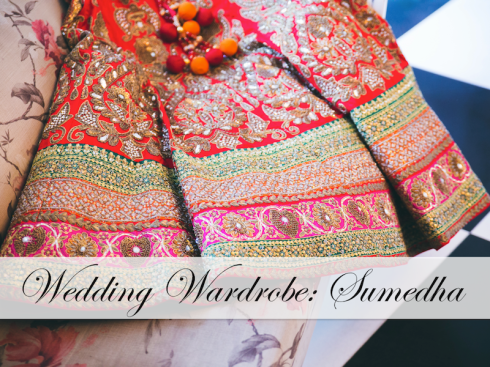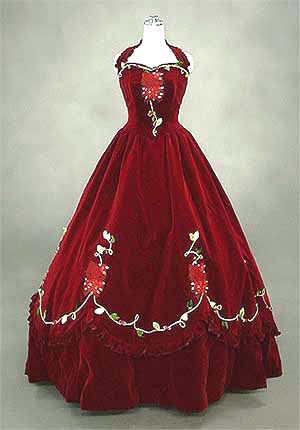Source:- Google.com.pk
wedding is called vivaha (Hindi: विवाह) (Bengali : বিবাহ), (Kannada: ಮದುವೆ (Maduve)),(Telugu: వివాహం) and the wedding ceremony is called vivaah sanskar.[1][2] The wedding ceremony is traditionally conducted entirely, or at least partially in Sanskrit, considered by Hindus as the language of holy ceremonies. The local language of the people involved is also used. The Hindus attach a lot of importance to marriages, the ceremonies are very colourful, and celebrations may extend for several days. The bride's and groom's home - entrance, doors, wall, floor, roof - are sometimes decorated with colors, balloons and other decorations.[3]
The rituals and process in a Hindu wedding vary widely. Nevertheless, there are a few key rituals common in Hindu weddings - Kanyadaan, Panigrahana, and Saptapadi, which are respectively, giving away of daughter by the father, voluntarily holding hand near the fire to signify union, and taking seven steps with each step includes a vow/promise to each other before fire.[4] The Hindu wedding ceremony at its core is essentially a Vedic yajna ritual. The primary witness of a Hindu marriage is the fire-deity (or the Sacred Fire) Agni, in the presence of family and friends.[5]The pre-wedding and post-wedding rituals and celebrations vary by region, preferences or the resources of the groom, bride and their families. They can range from one day to multi-day events. Pre-wedding ceremonies include engagement (involving vagdana or betrothal and lagna-patra written declaration),[2] and arrival of the groom's party at the bride's residence, often in the form of a formal procession with dancing and music. The post-wedding ceremonies may include Abhishek, Anna Prashashan, Aashirvadah, and Grihapravesa - the welcoming of the bride to her new home.
In India, where most Hindus live, by law and tradition, no Hindu marriage is binding and complete unless the ritual of seven steps and vows in presence of fire (Saptapadi) is completed by the bride and the groom together. This requirement is under debate.
Ancient Hindu literature, such as Asvalayana Grhyasutra and Atharvaveda, identify eight forms of marriages.[2] These are:[4][7]
Brahma marriage - considered the religiously most appropriate marriage, where the father found an educated man, proposes the marriage of his daughter to him. The groom, bride and families willingly concur with the proposal. The two families and relatives meet, the girl is ceremoniously decorated, the father gifts away his daughter in betrothal, and a vedic marriage ceremony is conducted. This type of wedding is now most prevalent among Hindus in modern India.[4]
Daiva marriage - in this type of marriage, the father gives away his daughter along with ornaments to a priest as a sacrificial fee. This form of marriage occurred in ancient times when yajna sacrifices were prevalent.
Arsha marriage - in this type of marriage, the groom gives a cow and a bull to the father of the bride and the father exchanges his daughter in marriage. The groom took a vow to fulfill his obligations to the bride and family life (Grihasthashram).
Prajapatya marriage - in this type of marriage, a couple agree to get married by exchanging some Sanskrit mantras (vows to each other). This form of marriage was akin to a civil ceremony.
The above four types of marriages were considered prashasta marriages (proper, religiously appropriate under Hinduism). The other four were considered aprashasta (inappropriate).[2][4] Among inappropriate weddings, two acceptable forms of marriages were:
Gandharva marriage - in this type of marriage, the couple simply lived together out of love, by mutual consent, consensually consummated their relationship. This marriage was entered into without religious ceremonies, and was akin to the Western concept of Common-law marriage. Kama Sutra, as well as Rishi Kanva - the foster-father of Shakuntala - in the Mahabharata, claimed this kind of marriage to be an ideal one.[2][7]
Asura marriage - in this type of marriage, the groom offered a dowry to the father of the bride and the bride, both accepted the dowry out of free will, and he received the bride in exchange. This was akin to marrying off a daughter for money. This marriage was considered inappropriate by Hindu Smriti-writers because greed, not what is best for the girl, can corrupt the selection process.[2]
The last two marriages were not only inappropriate, but religiously forbidden (the children, if any, from these forbidden types of consummation were considered legitimate, nevertheless).
Rakshasa marriage - where the groom forcibly abducted the girl against her and her family's will. The word Rakshasa means devil.
Paishacha marriage - where the man forces himself on a woman when she is insentient, that is drugged or drunken or unconscious.
James Lochtefeld finds that the last two forms of marriage were forbidden yet recognized in ancient Hindu societies, not to encourage these acts, but to provide the woman and any children with legal protection in the society.
There is no single standard Hindu marriage ceremony.[4] Regional variations and considerable flexibility in the rituals are prevalent. The variations may be based on family traditions, local traditions, resources of the marrying families, and other factors. Some of the key rituals are performed in slightly different ways in different regions.
There are a few key rituals common in a Hindu wedding ceremony. These are
Kanyadaan - the giving away of daughter by the father
Panigrahana - a ritual in presence of fire, where the groom takes the bride's hand as a sign of their union
Saptapadi - is the most important ritual. It is called the seven step ritual, where each step corresponds to a vow groom makes to bride, and a vow the bride makes to groom. The vows are pronounced in Sanskrit in long form, or short quicker form, sometimes also in the language of the groom and bride. In many weddings, Saptapadi is performed near a fire; and after each of the seven oaths to each other, the groom and bride perform the ritual of agnipradakshinam - walk around the fire, with part of each other's clothing tied to each other. The fire is a form of yajna - a vedic ritual where fire is the divine witness (to the marriage).[5] After Saptapadi, the couple are considered husband and wife.
The Kanyadaan ceremony is performed by the father.[10] If father has passed away, a guardian of bride's choosing performs this ritual. The father brings the daughter, then takes the bride's hand and places it to the groom's. This marks the beginning of the ceremony of giving away the bride. The groom accepts the bride's hand, while the kama-sukta (hymn to love) is pronounced, in the presence of the father, the bride and the groom. The Kamasukta verse is:[10]
Who offered this maiden?, to whom is she offered?
Kama (the god of love) gave her to me, that I may love her
Love is the giver, love is the acceptor
Enter thou, the bride, the ocean of love
With love then, I receive thee
May she remain thine, thine own, O god of love
Verily, thou art, prosperity itself
May the heaven bestow thee, may the earth receive thee
After this ritual recital, the father asks the groom to not fail the girl in his pursuit of dharma (moral and lawful life), artha (wealth) and kama (love). The groom promises to the bride's father that he shall never fail her in his pursuit of dharma, artha and kama. The groom repeats the promise three times.
The groom's promises to bride's father marks the end of the kanyadaan ritual in Hindu wedding.
Wedding Lehenga Design lehnga design 2014 Latest for engagement images for kids for marriage for bride
Wedding Lehenga Design lehnga design 2014 Latest for engagement images for kids for marriage for bride
Wedding Lehenga Design lehnga design 2014 Latest for engagement images for kids for marriage for bride
Wedding Lehenga Design lehnga design 2014 Latest for engagement images for kids for marriage for bride
Wedding Lehenga Design lehnga design 2014 Latest for engagement images for kids for marriage for bride
Wedding Lehenga Design lehnga design 2014 Latest for engagement images for kids for marriage for bride
Wedding Lehenga Design lehnga design 2014 Latest for engagement images for kids for marriage for bride
Wedding Lehenga Design lehnga design 2014 Latest for engagement images for kids for marriage for bride
Wedding Lehenga Design lehnga design 2014 Latest for engagement images for kids for marriage for bride
Wedding Lehenga Design lehnga design 2014 Latest for engagement images for kids for marriage for bride
Wedding Lehenga Design lehnga design 2014 Latest for engagement images for kids for marriage for bride










No comments:
Post a Comment